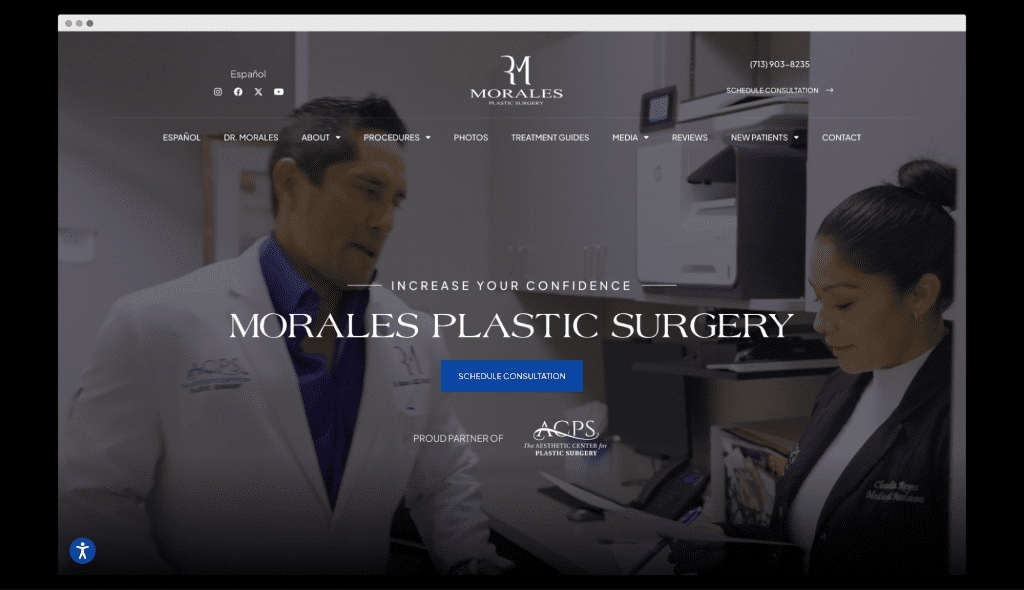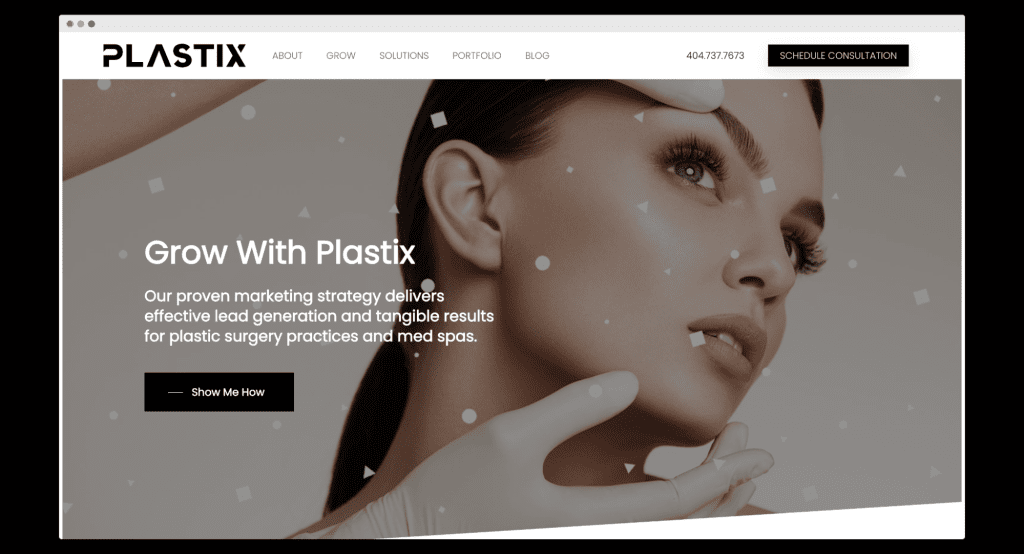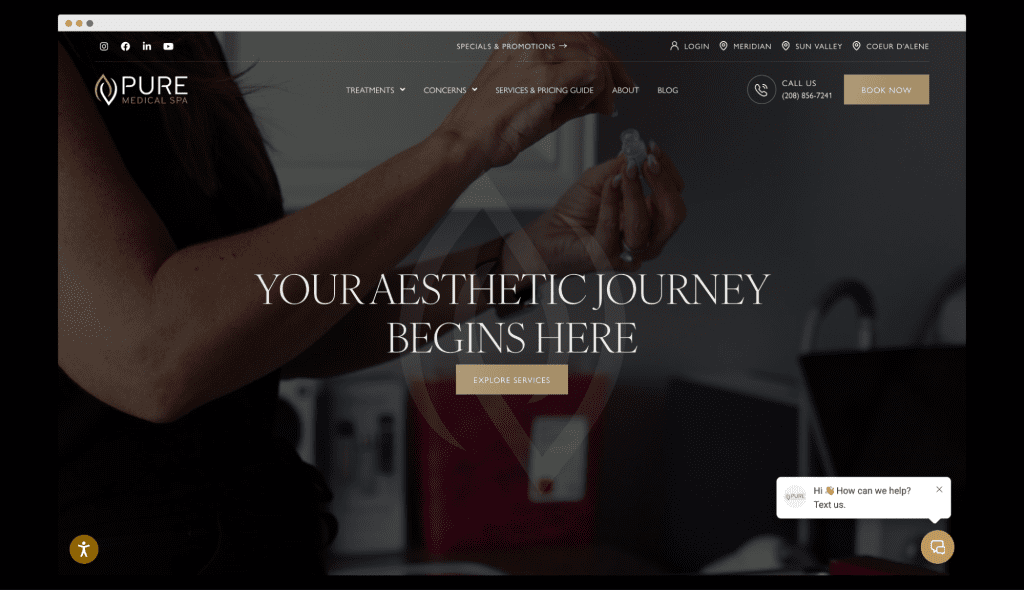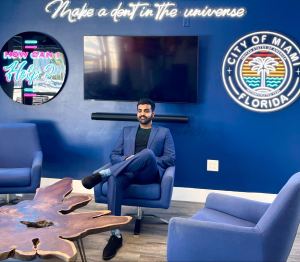From one clinic’s SEO surge to a 200-clinic AI “operating system,” Dunn shows what happens when you bet on a growing niche.
In 2018, Eric Dunn was running Evolve Marketing, a versatile agency that served a broad mix of clients. Then a single plastic surgery client from Atlanta changed everything. After 18 months of long-game SEO, the clinic’s site leapt from roughly 8,000 monthly visits to north of 50,000, fueling its best revenue year in two decades. “We had really set this customer for success,” Dunn recalled. “By that time later, he had the largest year he’d ever had.”
That proof-of-concept became the light-bulb moment. They renamed the agency to Plastix Marketing and decided that the agency was going to serve only plastic surgery and med spa practices. Five years later, the agency works with clinics in 25 U.S. states plus Canada and Mexico. The team is built from former med spa managers to digital marketing veterans. The result? Outsized returns for single-location clinics earning $1.5-3 million who want to double revenue, not just nudge it.
Building a Full-Stack Growth Engine

Growing med spa practices also revealed a gap to Dunn. Off-the-shelf CRMs were either over-priced or under-powered for small aesthetic practices. So in 2023, Dunn spun out Aesthetix CRM. “We stumbled onto the ability to develop our own CRM and stop reinventing the wheel,” he said. Two years in, the platform has more than 200 clinics worldwide using its AI chat, voice-AI, and automated campaigns to run sales and marketing.
Plastix and Aesthetix now operate as sister companies. Plastix supplies the agency firepower, including onboarding, custom campaign design, and ongoing optimizations. Aesthetix CRM delivers the engine as an AI-driven platform that captures leads, automates follow-ups, and tracks every patient touchpoint to convert clicks into booked procedures.
Why Lifecycle-Tailored Beats One-Size-Fits-All

Walk through Plastix’s onboarding and you’ll benefit from two to three strategic consult calls with Kari Stevison, a co-founder and lead consultant, before any contract appears. The reason is that Plastix wants to actually know about where their clients sit in the lifecycle so they can create a custom plan to help them. A few examples of clients with different needs include:
- Startups typically chase lead volume.
- Mid-life clinics wrestle with conversion costs and paid-ad fatigue.
- Mature practices are focused on retention and referrals.
“99% of our programs are customized,” Dunn said. “We might pull something out of the fourth tier down to the second because that specific piece really matters for a practice.”
That modular mindset extends to pricing. Twelve-month retainers bundle once-à-la-carte tools (referral engines, loyalty modules, even website rebuilds) into one predictable fee. The cost-effective bundle trims four-figure up-front charges that are typically prohibitive for small-business owners.
Rewriting SEO for the AI Era
Google’s AI Overviews rocked every search-first agency this year, and Dunn felt the tremor. “The reality is we don’t necessarily know how this is all gonna go yet,” he admits. Plastix responded by re-engineering its entire SEO stack to be:
- Local first. Google Business Profile optimization now anchors every plan.
- AEO content. Articles written (and AI-assisted) to answer conversational queries straight inside AI summaries.
- Cost realignment. AI cuts production hours, so Plastix slashed fees and passed savings to clients rather than pocketing the margin.
The agency is also tracking Google’s recent partnership with Instagram. Plastix is betting that image-rich posts will gain ranking weight as AI mode prioritizes visuals.
The AI “Operating System” Clinics Didn’t Know They Needed
Where does Aesthetix head next? Dunn envisions an AI OS for aesthetics. This includes voice bots booking consults, chat agents building campaigns on command, and data copilots surfacing revenue leaks before they sting. “You need this tool to be your hub of where all your AI tools fit in,” he said. “We’re going to help the small business implement game-changing tech that makes them super-efficient.”
For clinics with lean teams, that efficiency could be the edge that keeps marketing spend stable while competitors scramble to decode each algorithm update.
The Aesthetic Playbook

Eric Dunn’s playbook isn’t complicated, just hard to stick to. Pick one slice of the market, build the infrastructure that slice needs, and keep tightening the screws until your results are impossible to ignore. Plastix proves the point on the agency side; Aesthetix crystallizes it in software. Together, they hand small-to-mid-size clinics a growth engine normally reserved for corporate chains.
For founders outside aesthetics, the takeaway travels:
- Niche down harder than feels comfortable. Mastery beats “full-service” bravado every time.
- Own the data layer. A CRM tailored to your niche turns one-off wins into compounding insights.
- Iterate in public. Dunn keeps refining pricing, SEO tactics, even product features, the moment algorithms shift, no sacred cows.
The next few years will show whether AI copilots and voice bots really become every clinic’s silent receptionist. If they do, Dunn’s early bet positions Plastix and Aesthetix as the rails those tools run on. If they don’t, the company still controls the deepest performance dataset in its corner of healthcare. Either way, focus and infrastructure beat flashy hacks, just ask the 200 clinics already letting Dunn’s system run the numbers.
And that’s the operator’s journey in a sentence: commit, systemize, compound. The rest is noise.







